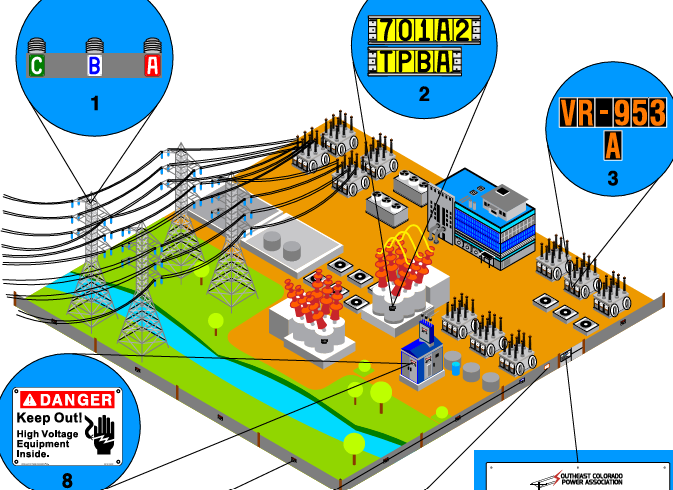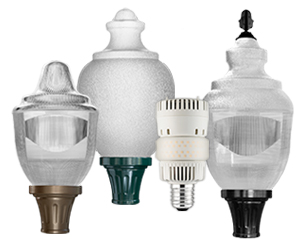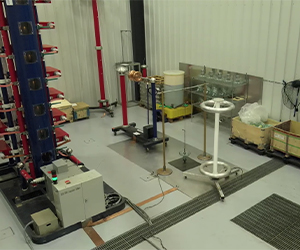Arc Flash Safety Equipment Examined
By R.W. Hurst, Editor
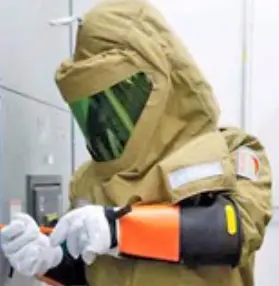
CSA Z462 Arc Flash Training - Electrical Safety Essentials
Our customized live online or in‑person group training can be delivered to your staff at your location.

- Live Online
- 6 hours Instructor-led
- Group Training Available
Download Our OSHA 4474 Fact Sheet – Establishing Boundaries Around Arc Flash Hazards
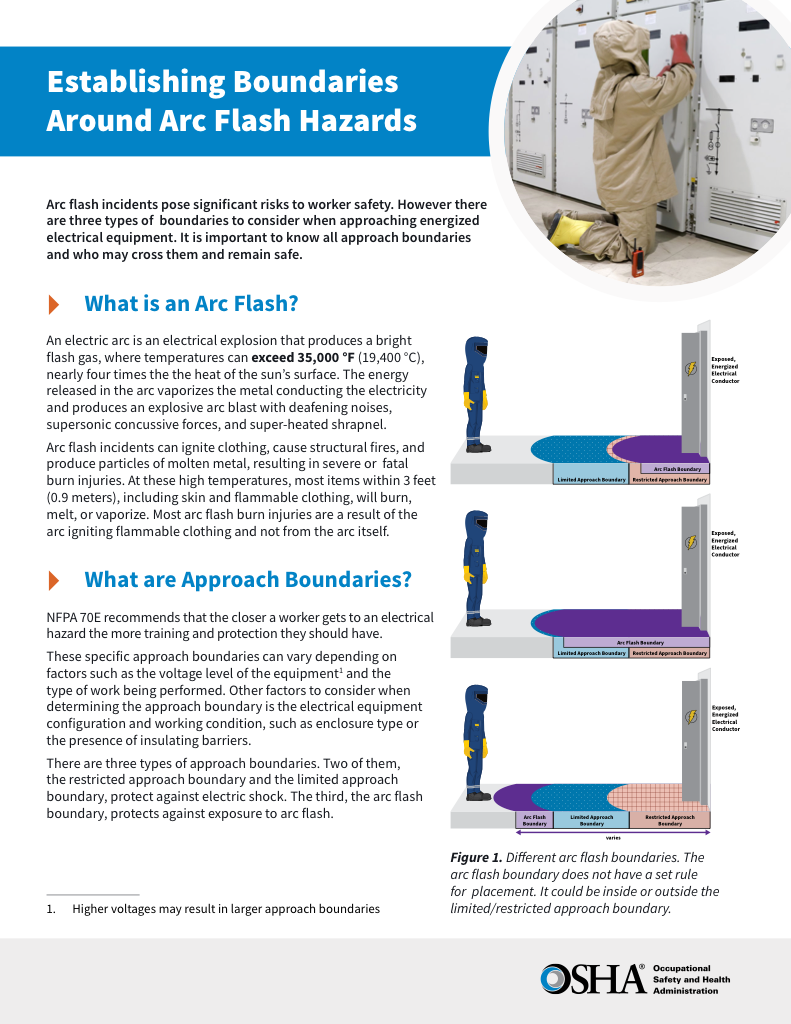
- Understand the difference between arc flash and electric shock boundaries
- Learn who may cross each boundary and under what conditions
- Apply voltage-based rules for safer approach distances
Arc flash safety equipment protects electrical workers from thermal burns, shock, and blast injuries by using PPE such as flame-resistant clothing, face shields, gloves, and arc-rated helmets. It ensures NFPA 70E and OSHA compliance during energized work.
What is Arc Flash Safety Equipment?
Arc flash safety equipment includes protective clothing and gear designed to safeguard workers from electrical hazards.
✅ Provides arc-rated PPE to prevent burns and injuries
✅ Includes face shields, gloves, and protective suits
✅ Ensures OSHA and NFPA 70E compliance for safety
Arc flash safety equipment is essential for electrical engineering and maintenance professionals who work in high-risk environments where electrical faults can lead to catastrophic explosions. These incidents produce extreme heat, intense pressure waves, and molten metal, posing serious threats to worker safety. Without proper protective measures, injuries such as severe burns, vision impairment, and even fatalities can occur. Ensuring the right safety equipment is in place not only helps prevent accidents but also supports compliance with industry regulations and standards. From personal protective gear to risk mitigation strategies, understanding the critical role of arc flash safety equipment is crucial in safeguarding workers and maintaining a safe operational environment. Electrical workers must wear arc flash PPE clothing rated for the incident energy level of the task to reduce burn risk and ensure compliance with NFPA 70E requirements.
Request a Free Training Quotation
Personal protective equipment (PPE) plays a fundamental role in shielding workers from hazards. Unlike standard electrical safety gear, arc-rated PPE is specifically designed to withstand the intense heat and energy generated by an electrical explosion. Flame-resistant suits, insulated gloves, face shields, and helmets form the primary defense line, preventing severe burns and injuries. The choice of PPE depends on the severity of the potential blast, with higher-rated protective gear required for environments where energy levels exceed certain thresholds. Ensuring that workers are outfitted with the right PPE for their specific tasks is not just a precaution but a necessity for workplace safety. Selecting the correct arc-rated clothing is essential, as these garments are engineered to withstand extreme thermal energy and provide measurable protection in cal/cm².
FREE EF Electrical Training Catalog
Download our FREE Electrical Training Catalog and explore a full range of expert-led electrical training courses.

- Live online and in-person courses available
- Real-time instruction with Q&A from industry experts
- Flexible scheduling for your convenience
Understanding the Threat: Electrical Hazards from Electrical Explosions
Before diving into specific equipment, let's revisit the key factors that contribute to the severity of electrical hazards.
-
Available Fault Current: This refers to the maximum amount of current that can flow during a fault event at a specific point in the electrical system. Higher available fault current translates to a more intense explosion with a greater release of thermal energy.
-
Arc Fault Current: Not all available current contributes to the arc. Factors like the type of fault and protective device clearing time influence the actual current that flows during an explosion.
-
Bolted Fault Clearing Time: This is the time it takes for the protective device to interrupt the current flow during a fault. Faster clearing times limit the arc duration and energy release.
-
Electrode Configuration: The physical arrangement of the conductors involved in the event (phase-to-phase, phase-to-ground, etc.) influences its intensity.
-
Enclosure Type: Open enclosures allow for venting of the AF energy, while closed enclosures can trap heat and pressure, leading to a more severe event.
These factors contribute to the incident energy, a metric that quantifies the amount of thermal energy released by an incident at a specific location. This value, typically expressed in calories per square centimetre (cal/cm²), is crucial for determining the appropriate level of AFSE protection. Understanding arc flash PPE categories helps workers and supervisors choose the right combination of suits, gloves, and shields based on calculated hazard levels.
Comprehensive PPE kits simplify the selection process by providing pre-packaged gear suited to different risk levels. These kits often include essential components such as arc-rated clothing, insulated footwear, and protective eyewear, ensuring workers have the complete protection needed for hazardous tasks. By offering an all-in-one solution, these kits eliminate the guesswork in PPE selection, ensuring that every aspect of protection is accounted for. Properly stocked kits also support regulatory compliance, helping businesses adhere to established safety protocols while safeguarding their workforce.
Determining the appropriate PPE requires a thorough understanding of PPE categories and ratings. Industry standards classify protective gear into specific categories based on its ability to withstand an event. These categories, ranging from basic protection against lower energy incidents to advanced suits capable of handling high-calibre explosions, guide workers and safety officers in selecting the appropriate attire for each job. Arc ratings, measured in calories per square centimetre (cal/cm²), indicate the level of thermal protection a garment provides. Without proper classification and adherence to these ratings, workers may find themselves insufficiently protected in the event of an electrical fault. Comprehensive arc flash protection involves more than just clothing—it integrates PPE selection with boundary setting, labeling, and safe work procedures.
What Safety Equipment Precautions Do You Need?
To ensure the effectiveness of arc flash safety equipment, several precautions should be taken:
-
Regular Inspection: Equipment should be regularly inspected for signs of wear and tear. Damaged gear should be repaired or replaced promptly.
-
Proper Storage: Store all PPE in designated storage bags or gear bags to protect it from physical damage and contamination. Ensure that it is kept in a clean, dry, and cool environment.
-
Training: Workers must be trained on their protective equipment's proper use, maintenance, and limitations. Understanding how to use each piece correctly is vital for safety.
-
Compliance with 70E: Adherence to the standard ensures that all safety practices and equipment use are current with the latest safety protocols.
Regulatory frameworks play a crucial role in shaping safety protocols. Standards such as NFPA 70E, CSA Z462, and IEEE 1584 establish guidelines for risk assessment, PPE selection, and safe work practices. These regulations are not merely recommendations; they set legal and operational requirements that businesses must follow to maintain a safe working environment. Compliance with these standards ensures that workers are adequately protected and that organizations are prepared for inspections and audits. Failure to adhere to these guidelines can result in severe consequences, including workplace injuries, legal liabilities, and financial penalties. Each layer of arc flash rated clothing adds insulation against heat and flame, forming part of a system that minimizes exposure during electrical faults.
Electricity Today T&D Magazine Subscribe for FREE

- Timely insights from industry experts
- Practical solutions T&D engineers
- Free access to every issue
How Does Safety Equipment Prevent Injury?
While no equipment can entirely prevent an electrical explosion from occurring, certain devices can significantly reduce the likelihood and impact of such incidents:
-
Circuit Breakers and Relays: These devices detect faults and interrupt the electrical flow to prevent excessive energy release.
-
Insulating Barriers: Proper insulation of electrical components can help prevent unintended contact that might lead to an AF.
-
Protective Relays: These are designed to monitor electrical systems and trigger protective measures when irregularities are detected.
A robust electrical safety program extends beyond PPE selection to include hazard assessment and mitigation. Conducting thorough risk evaluations allows employers to identify potential hazards and implement preventive measures. Engineering controls, such as arc-resistant equipment and circuit breakers, help contain energy releases, while administrative policies, including lockout/tagout procedures and training programs, reinforce safe work practices. By integrating hazard assessments into routine operations, businesses can reduce the likelihood of incidents and enhance overall workplace safety. Employers should supply appropriate PPE for arc flash that includes gloves, face shields, and arc-rated suits matched to the job’s incident energy analysis.
The Role of Equipment: Layers of Protection
Arc flash safety equipment is a vital barrier between the worker and the electrical hazard. This specialized equipment works in tandem with safe work practices to minimize the risk of injury. Here's a breakdown of the essential components of comprehensive AFSE kits.
-
Clothing: This flame-resistant (FR) clothing comes in various configurations, including coveralls, jackets, pants, and hoods. The specific type and AF rating (typically expressed in cal/cm²) are chosen based on the risk assessment for the work environment.
-
Face Shields: These shields protect the face and eyes from the intense light and potential flying debris associated with AF. They are often made from high-strength polycarbonate materials for maximum protection.
-
Gloves: Specially designed gloves provide hand protection from the intense heat of an AF. Selection is based on dexterity needs and AF rating. Leather outer shells can offer additional protection against abrasion and cuts.
Properly maintained arc flash gear is critical, damaged equipment can compromise safety and must be inspected regularly according to NFPA 70E and OSHA standards.
What Arc Flash Safety Equipment is Required?
An arc flash kit provides essential protection for workers exposed to electrical hazards by ensuring that all necessary safety gear is available in one package. These kits typically contain arc flash protective garments, including coveralls arc-rated to withstand high thermal energy, gloves, face shields, and safety glasses. Investing in a high-quality arc flash kit ensures that workers are adequately equipped for hazardous environments, reducing the risk of severe injuries. Employers should regularly inspect and update these kits to maintain compliance with evolving safety standards and keep their workforce protected at all times.
Several types of safety equipment are necessary to protect workers from hazards:
-
Arc Flash Clothing: Flame-resistant clothing with an appropriate arc rating is essential. This includes long-sleeve shirts, pants, coveralls, and jackets.
-
Face Shield: An arc-rated face shield protects the face from thermal energy and flying debris. It often includes a hood for additional protection.
-
Gloves: Insulating rubber gloves with leather protectors safeguard hands against electrical shock and thermal burns.
-
Footwear: Arc-rated boots or shoes provide protection from electrical hazards and should be part of the comprehensive PPE kit.
-
Gear Bag: A gear bag or storage bag is used to keep all safety equipment organized and protected when not in use. This helps in maintaining the integrity of the gear.
Selecting the Right AFSE
The National Fire Protection Association 70E standard provides a framework for electrical safety in the workplace. This standard outlines various PPE categories based on the calculated incident energy. The chosen PPE category dictates the rating required for the clothing and other components of the AFSE.
Selecting AFSE with a rating exceeding the anticipated incident energy at the work location is crucial. A safety factor is often incorporated, meaning the chosen PPE rating should be higher than the calculated incident energy to account for potential inaccuracies in the analysis or unforeseen circumstances.
Arc flash safety equipment is not just a regulatory requirement but a vital component of any electrical safety program. Ensuring that workers have access to the right protective gear, understanding PPE categories and ratings, adhering to industry standards, and conducting thorough risk assessments are all essential to maintaining a safe working environment. By prioritizing these measures, businesses can protect their employees from one of the most severe electrical hazards, reducing injuries and fostering a culture of safety in the workplace.
Related Articles






